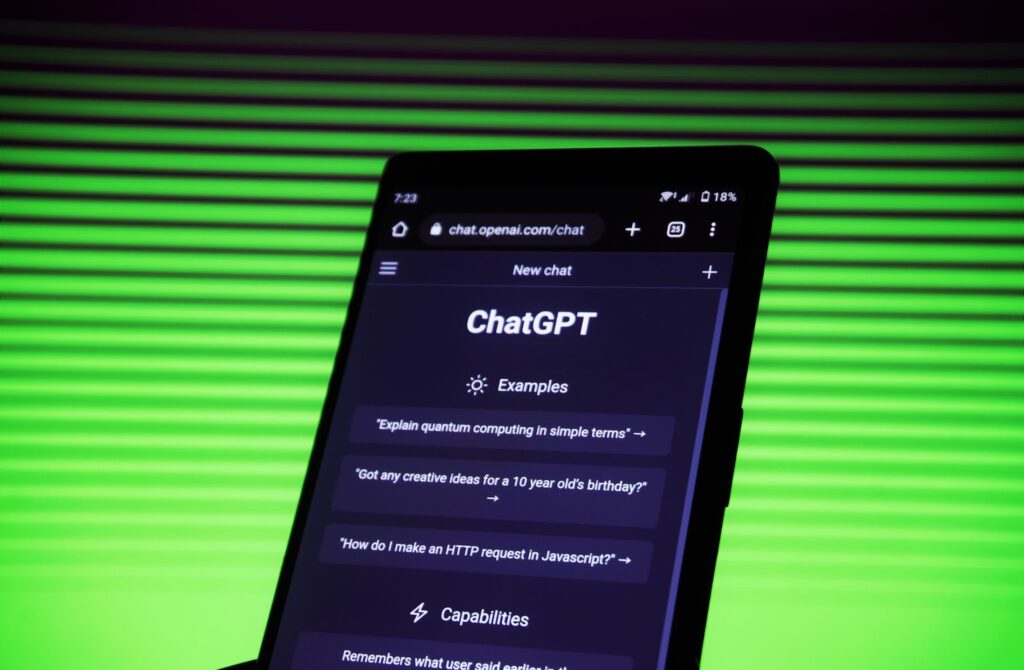Why is GPT-3 Better Than GPT-J?

In the world of AI, GPT-3 and GPT-J are two of the most popular models. GPT-3 is the latest evolution of natural language processing models, while GPT-J is an earlier version of the same model. Both models have their own strengths and weaknesses, and this article will compare and contrast the two models to help you decide which one is the best for your needs.
GPT-J vs GPT-3
GPT-3 (Generative Pre-trained Transformer 3) is an artificial intelligence language model developed by OpenAI that is capable of generating human-like language and performing various natural language processing tasks. GPT-3 has 175 billion parameters, making it the largest language model to date, and it has been trained on a diverse range of internet texts, enabling it to understand the nuances of the English language and generate coherent and contextually appropriate responses.
GPT-J, on the other hand, is another AI language model developed by EleutherAI which has 6 billion parameters but is open-sourced unlike its rival. Although it has fewer parameters compared to GPT-3, it is far more efficient and faster than GPT-3 due to its open-source development. Despite having fewer parameters, GPT-J performs impressively in various natural language processing tasks at a much faster speed than GPT-3. However, GPT-3 is more powerful and versatile than GPT-J due to its vast number of parameters that allow it to perform highly complex tasks such as writing code, and generating highly creative content.
What is GPT-J?
GPT-J is an open-source language model created by EleutherAI and is a collaboration of various independent researchers. It is similar to GPT-3, but unlike GPT-3, GPT-J’s code is available for anyone to access, modify and use for free. GPT-3 has a much larger number of parameters, and thus more data, making it more comprehensive and better at generating human-like text than GPT-J.
However, GPT-J has the potential to be more flexible for specific use-cases while being less expensive than GPT-3. While GPT-J may not be as comprehensive as GPT-3, it is constantly evolving and improving as more researchers contribute to and expand its capabilities. It is important to choose the right model for your specific use-case, based on factors like the size of the training dataset, processing power available, and budget.
How Do They Work?
GPT-3 and GPT-J are AI-based language models that use advanced algorithms to analyze and process human language data, but they differ in several ways.
- GPT-3: This language model is known for its massive size and impressive capabilities in generating human-like text. It has been trained on a diverse range of texts and can generate coherent, grammatically-correct sentences and paragraphs suited to various tasks.
- GPT-J: It is a relatively new language model that is similar to GPT-3 but is much more powerful in terms of the amount of data it has been trained on. GPT-J is nearly 6 times larger than GPT-3, with 6 billion parameters compared to GPT-3’s 175 billion. This model can process even larger datasets and produce higher quality language outputs. However, its use is limited as it requires a lot of computational resources and can only be accessed via expensive GPU clusters.
Both models use deep learning technology to refine their understanding of language patterns and produce coherent and contextually-appropriate responses. GPT-3 is better than GPT-J in terms of accessibility and ease of use, whereas GPT-J has the advantage of being more powerful due to its large size.
The Advantages of GPT-3
GPT-3, the latest version of OpenAI’s language model, offers a wide range of features that make it a powerful tool in the world of natural language processing. GPT-3 is a vastly improved version of its predecessor GPT-J, and it can be used to generate text, answer questions, and complete tasks with categories. In this article, we’ll explore the advantages of GPT-3 and why it is being considered a breakthrough in the field of Artificial Intelligence.
Greater Capacity and Diversity
GPT-3 is better than GPT-J due to its greater capacity and diversity. In terms of capacity, GPT-3 has 175 billion parameters, making it one of the largest language models to date. It can generate more sophisticated and coherent responses to prompts, and can understand and generate a wider range of topics and ideas.

GPT-3’s diversity also sets it apart from GPT-J. The model has been trained on a more diverse dataset, which allows it to generate more nuanced and contextually relevant responses. It can also understand and generate text in multiple languages, making it accessible to users from around the world. The improved capacity and diversity of GPT-3 make it a powerful tool for developers and businesses looking to generate high-quality content and improve their natural language processing capabilities.
Higher Accuracy and Consistency
GPT-3 has several advantages over GPT-J, including higher accuracy and consistency in generating human-like text while performing language tasks. Unlike GPT-J, GPT-3 has a larger pre-trained model, which allows it to generate more accurate and consistent results. Additionally, GPT-3 has a higher contextual understanding of natural language, allowing it to generate more coherent and well-formed sentences.
This contextual understanding also allows GPT-3 to perform more complex language tasks, such as translation and summarization, with higher accuracy. GPT-3 also has a more diverse range of applications and use cases, making it a more versatile and powerful language model than GPT-J. With these advantages, GPT-3 is quickly becoming the go-to choice for businesses, developers, and researchers looking to leverage the power of AI in their applications and services.
Availability of Pre-Trained Models
One of the significant advantages of GPT-3 is the availability of pre-trained models that can be fine-tuned for various natural language processing (NLP) and text generation tasks. These pre-trained models offer several benefits, such as saving time and resources, improving accuracy, and enabling faster development of applications. GPT-3 has 175 billion parameters, making it significantly larger than GPT-J, which has only six billion parameters.
This larger size allows GPT-3 to generate more comprehensive, coherent, and contextually appropriate responses to inputs. Additionally, GPT-3 is trained on a more comprehensive dataset than GPT-J, including a more diverse range of languages, tasks, and sources. These two factors combine to make GPT-3 a better choice than GPT-J for a wide range of applications, including chatbots, virtual writing assistants, question-answering systems, and more. However, it is worth noting that GPT-3 is not free, and accessing its full range of functions may require a significant investment of time and resources.
Pro tip: Before choosing a pre-trained model for your NLP project, consider your specific needs and use case to ensure that the model you choose is the best fit for your requirements.
The Advantages of GPT-J
GPT-3 (Generative Pre-trained Transformer 3) is the latest version of the popular GPT series of natural language processing models. GPT-3 is more powerful and efficient than its predecessor, GPT-J (Generative Pre-trained Transformer-J). In this article, we’ll explore the advantages of GPT-J models, including their scalability and accuracy, and how they compare to GPT-3.
Open-source and Free to Use
GPT-J is an open-source and free-to-use language model that offers several advantages over the previous GPT-3 model.
Advantages of GPT-J Include:
1. Open-source: GPT-J is open-source, meaning that developers can access and modify the code for free. This allows for customization and improvement of the model according to specific needs and use cases.
2. Free to use: GPT-J is free to use, unlike GPT-3, which requires a subscription and payment based on usage. This makes GPT-J more accessible and cost-effective for individuals and small businesses.
3. Scalability: GPT-J is designed to run on graphics processing units (GPUs), making it highly scalable and capable of handling large amounts of data quickly and efficiently.
4. Improved performance: GPT-J uses a larger dataset and has more parameters than GPT-3, resulting in improved performance and accuracy in language modeling and text generation.
With these advantages, GPT-J has become a popular choice for developers and businesses looking for a powerful and cost-effective language model.
Collaboration and Customization
GPT-J is a powerful language model that is open-source and available for collaboration and customization, making it an advantageous tool for various natural language processing tasks. Some of the advantages of GPT-J over GPT-3 include:
1) Open-source platform: GPT-J is open-source, making it more accessible and easier for developers to customize and collaborate without limitations.
2) Flexibility: As an open-source model, GPT-J allows developers to create their own versions of the model and tailor it to their specific needs and domain expertise.
3) Cost-effective: While GPT-3 requires a paid subscription, GPT-J is free, making it more cost-effective for smaller businesses and individuals.
These advantages highlight how GPT-J can be a beneficial tool to those looking to develop their language models without any cost-intensive subscriptions or other limitations. With its flexibility, open-source framework, and cost-effectiveness, GPT-J provides developers with a powerful language model that is easy to collaborate and customized to their specific needs.
Pro Tip: GPT-J can be utilized to generate text with a high degree of coherence, making it a cost-effective and customizable solution for various natural language processing tasks.
Better Privacy and Security
While GPT-3 has been a game-changer in the field of natural language processing, GPT-J takes it further by offering better privacy and security for users. Unlike GPT-3, which is a closed-source software controlled by its parent company, OpenAI, GPT-J is an open-source version of the same technology. This means that users have complete control over the way their data is used and can make changes to the code as needed.
Additionally, GPT-J can be run locally on a personal computer, eliminating the need for users to upload their data to a third-party server. This offers a higher level of security and protects users’ sensitive data from being exposed to the internet. In conclusion, while GPT-3 is a powerful tool, it pales in comparison to GPT-J when it comes to privacy and security. GPT-J offers users the flexibility and control they need to feel secure in today’s digital world.
Comparison of Capabilities
When comparing GPT-J and GPT-3, it’s important to consider the capabilities of each language. GPT-J was released in 2018 and is a natural language processing system that can generate coherent, human-like text. GPT-3, released in 2020, is a more robust natural language processing system that can generate even more coherent text, faster than ever before. It has proven to be more accurate and efficient than GPT-J. In this article, we’ll look at the differences between GPT-J and GPT-3 and how they compare in terms of capabilities.
Text Generation
GPT-3 and GPT-J are two text generation models that have been making waves in the field of artificial intelligence. While both models are capable of generating human-like text, there are several reasons why GPT-3 stands out as the better of the two. Firstly, GPT-3 has been trained on a much larger dataset than GPT-J, with over 45 terabytes of text data. This has given it a broader range of knowledge to draw upon when generating text, resulting in text that is more diverse, coherent and accurate.

Secondly, GPT-3 has shown to be more flexible when it comes to generating text across different fields, including science, history, fiction, and poetry. Its ability to understand and generate text in a variety of contexts is unmatched by GPT-J or any other AI text generation model. Lastly, GPT-3 has a unique feature of completing tasks given to it in natural language, for example, writing an essay on a topic or answering questions from a given set of information. This makes it more efficient and versatile than GPT-J. Undoubtedly, GPT-3 is the better text generation model with superior capabilities compared to GPT-J, helping users to generate human-like text with greater ease and accuracy.
Natural Language Processing
Natural Language Processing (NLP) is a field of artificial intelligence that enables computers to interpret, understand, and generate human language. GPT-3 and GPT-J are two of the most advanced NLP models in the market. While both models are highly capable, GPT-3 has several advantages over GPT-J:
1. Larger training data: GPT-3 has been trained on a much larger dataset than GPT-J, allowing it to generate more coherent and contextually appropriate responses.
2. Better parameter tuning: GPT-3 has been subjected to more rigorous parameter tuning and hyperparameter optimization, allowing it to generate high-quality responses even in complex language tasks.
3. Improved efficiency: GPT-3 requires less computational resources and time to generate responses, making it a more efficient model.
In summary, GPT-3 is currently the more advanced and capable model because of its larger training dataset, better parameter tuning, and improved efficiency. However, as the technology continues to evolve, we can expect GPT-J to become more advanced and capable as well.
Pro Tip: When choosing an NLP model, consider your task’s complexity, the quality of the training data, and the efficiency of the model.
Conversational AI
Conversational AI has seen tremendous growth with newer models being introduced every year. While GPT-J is a powerful language generation model, GPT-3 still has some capabilities which set it apart from GPT-J.
Here are some reasons why GPT-3 is better than GPT-J:
1. GPT-3 has access to 175 billion parameters while GPT-J has only 6 billion parameters.
2. GPT-3 is designed to answer more complex questions and can generate more intricate responses than GPT-J.
3. GPT-3 has a more robust training dataset than GPT-J, which uses a smaller set of data.
4. GPT-3 can perform more tasks, from language translation to question-answering, compared to GPT-J.
However, both GPT-3 and GPT-J are impressive language models that showcase the potential of conversational AI in transforming how we communicate online.
Pro Tip: When choosing between GPT-3 and GPT-J, consider the specific use case you have in mind and which model’s capabilities can best address your needs.
Comparison of Performance
When comparing GPT-J to GPT-3, there are a few key differences one can observe. GPT-3 is more accurate and efficient in its language processing than GPT-J, as its neural network is more complex than its predecessor. It is also much faster, enabling it to process much larger datasets. Furthermore, GPT-3 is specifically designed to process natural language, making it more efficient and precise than GPT-J. Let us review these differences in more detail.
Accuracy and Errors
GPT-3 and GPT-J are two different language models created by OpenAI, with GPT-3 having a higher accuracy and fewer errors compared to GPT-J. GPT-3 has over 175 billion parameters, while GPT-J has 6 billion parameters. This means that GPT-3 can analyze and process a larger dataset than GPT-J, making it more accurate. Additionally, GPT-3 has been trained on a more diverse range of tasks than GPT-J, which means it can generate better responses to a wider range of prompts.
Despite both models being highly impressive and capable, GPT-3’s superior size and diversity make it a more accurate and reliable choice for natural language processing tasks. If you want to maximize precision and reduce errors in your language processing tasks, GPT-3 would be the better choice for you. Always choose the right model depending on the requirements of your task. GPT-3 can be expensive, and you might not need its huge dataset features for some tasks where GPT-J can be just as effective.
Speed and Optimization
GPT-3 and GPT-J are both AI language models, but GPT-3 is superior when it comes to speed and optimization, resulting in better performance. GPT-3 has 175 billion parameters, making it the largest and most powerful language model to date. It can perform a wide range of natural language tasks, including translation, summarization, and question-answering, with impressive accuracy and speed.
GPT-J, on the other hand, has 6 billion parameters, making it significantly smaller than GPT-3. While it can still perform natural language tasks, its performance and optimization are not as good as GPT-3. In summary, GPT-3 is faster and better optimized than GPT-J, resulting in superior performance when it comes to natural language tasks.
Scalability and Accessibility
While GPT-3 and GPT-J are both powerful natural language processing (NLP) models, there are key differences in their scalability and accessibility that make GPT-3 the better choice for most use cases.
- Scalability: GPT-3’s architecture allows for seamless scaling to higher volumes of data, making it suitable for large-scale NLP tasks such as text summarization and language translation. In contrast, GPT-J reaches limitations when data volumes increase, making it more suitable for smaller-scale tasks.
- Accessibility: GPT-3 is widely available through cloud-based APIs and other services, making it accessible to developers and researchers around the world. GPT-J, on the other hand, is an open-source model that requires more technical expertise and resources to deploy and maintain.
While both models have their strengths, GPT-3’s scalability and accessibility make it the better choice for most NLP use cases.
Which One to Use: GPT-3 or GPT-J?
The debate around which language to use has been ongoing ever since GPT-J and GPT-3 were released. While they both have some similarities, they also come with some differences. GPT-3 has several advantages over GPT-J in terms of performance, accuracy, and cost. It is also more scalable and has more advanced features. Let’s take a closer look at this comparison and see which one comes out on top.
Use Cases for GPT-3
GPT-3 is a versatile AI language model that has a vast array of use cases. However, its effectiveness depends on the specific task and available resources. GPT-3 can be used for a wide range of applications, including language translation, chatbots, content creation, and text completion. Its language proficiency and vast database make it a popular choice for developers and businesses alike.
GPT-J, on the other hand, is a newer AI model that has a higher processing power than the GPT-3. However, GPT-3 has a larger pre-trained data set, which gives it an edge over GPT-J in terms of accuracy and precision. Therefore, if you have access to the resources required to support GPT-3, it’s the better choice. In conclusion, when deciding between GPT-3 and GPT-J, consider the specific task and available resources. If you require high accuracy and precision, GPT-3 is the better option. On the other hand, if processing power is a priority, you should opt for GPT-J.
Use Cases for GPT-J
GPT-J is an AI language model created by EleutherAI that has many use cases just like GPT-3. Users can choose between the two models based on their specific needs and requirements.
Here are some of the use cases for GPT-J:
1. Text completion and generation: GPT-J can be used to generate creative, convincing, and coherent text for various purposes like article writing, marketing copy, and social media content.
2. Chatbots and virtual assistants: GPT-J chatbots can converse naturally and generate intelligent responses that mimic human conversation patterns.
When choosing between GPT-3 and GPT-J, it’s vital to consider factors like the available budget, the size of the project, and the training data. While GPT-3 is a maturing and commercially available model with a large training dataset and widespread adoption, GPT-J is a less powerful but an open-source model with fewer restrictions on usage and data access. Careful consideration of available options and informed decision making can help you to select the model that best suits your project’s needs.
Factors to Consider Before Choosing
When deciding whether to use GPT-3 or GPT-J, it’s essential to consider factors such as cost, availability, performance, and use case.
- GPT-3: With 175 billion parameters, GPT-3 offers impressive performance, accuracy, and speed. It’s ideal for applications that require a large amount of data processing, such as chatbots, question answering systems, and language translation, etc. However, GPT-3 has some limitations, such as accessibility and cost. It’s not accessible to everyone, and the licensing cost can be expensive.
- GPT-J: With 6 billion parameters, GPT-J is smaller than GPT-3. It’s an open-source model, which means it’s free and accessible to everyone. Although it’s not as powerful as GPT-3, GPT-J can still be useful in certain use cases, such as generating text for personal projects and small businesses. However, it might not be suitable for applications that require a lot of data processing or high-performance language models.
Therefore, before choosing between GPT-3 or GPT-J, consider your use case, budget, and requirements to select the best model for your needs.
Final Thoughts: GPT-J vs GPT-3
GPT-3 is a revolutionary advance in natural language processing that is significantly improving upon the abilities of its predecessor, GPT-J. GPT-3 has been able to learn complex linguistic patterns and demonstrate an impressive level of understanding for written and verbal communication. To get a better understanding of why GPT-3 is better than GPT-J, we need to compare the two models and look at the differences. In the following section, we will be discussing the advantages that GPT-3 has over GPT-J.
The Future of AI and Language Generation
The future of AI and language generation is an exciting and rapidly evolving field. While there has been a lot of buzz around GPT-J, the new AI language model developed by EleutherAI, it is still no match for the innovation and sophistication of GPT-3 from OpenAI. GPT-3’s capabilities are unparalleled in terms of its ability to analyze and interpret human language, perform a variety of natural language processing tasks, and generate human-like writing. Its advanced algorithms and vast database make it an incredibly powerful tool for language generation and automation, with implications for industries ranging from marketing to healthcare.
On the other hand, GPT-J is a promising development in the field of language generation, but its current limitations in terms of size and computing power mean that it can’t compete with GPT-3 on a commercial scale. While both models show promise for future advancements in AI and language generation, GPT-3’s current tech offers the most comprehensive and sophisticated approach to natural language processing to date. Keep an eye on the AI and language generation field for the latest developments in automation and innovation. As technology evolves, so does the potential for unmatched efficiency and accuracy in a variety of industries.
Other Alternatives to Consider
When comparing GPT-J and GPT-3, it’s essential to consider other alternatives available in the market. Both GPT-J and GPT-3 have their unique strengths and weaknesses, making room for other competitors to thrive in the market.
Here are some other alternatives to consider:
1. OpenAI Codex: This AI-based system is designed to provide low-latency assistance in writing and generating code.
2. Microsoft Turing NLG: Microsoft’s natural language generation model provides high-performance text generation capabilities with personalized language styles.
3. XLNet: Developed by Google, this autoregressive transformer model is designed to perform several natural language processing tasks, such as question answering and language translation.
It’s important to note that each alternative has a different use case and set of features that cater to specific needs. So, it’s worth looking into and comparing different options before making a choice. Always consider the use case and specific requirements before choosing an AI-based language processing model.
Conclusion
In conclusion, while GPT-J is a remarkable language generation model, GPT-3 outperforms GPT-J in most areas. GPT-3 has a larger pre-trained model, making it capable of generating more coherent and accurate language. This model also has vastly more training data that include large samples of the entirety of the internet, which makes it generally more knowledgeable than GPT-J.
Furthermore, the accuracy and precision of GPT-3 responses is very high, which makes it a better candidate for use in areas such as AI chatbots and language translation systems. In summary, while GPT-J is a notable model, GPT-3’s larger size, more comprehensive training data, and overall language accuracy make it the superior option for most modern applications.






